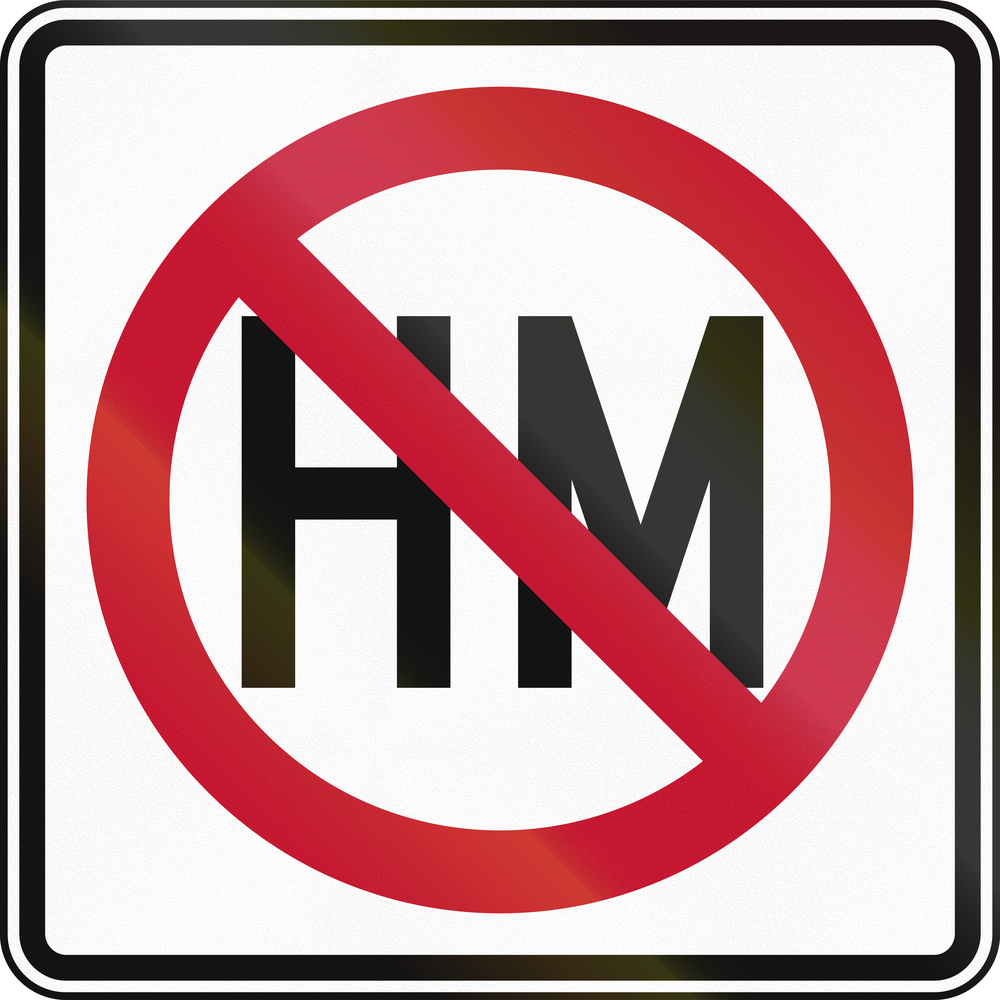A Franklin County Municipal Court judge (Environmental Division) ruled this past week on a statutory question regarding Columbus’ improper transporting of hazardous materials statute. (State v. Mitchell, 2015 ERB 074646)
Driver With Non-Hazardous Materials Destination in Columbus Drives Inside I-270 With a Hazardous Materials Load
In this case, an LTL driver was carrying multiple loads – including both hazardous materials and non-hazardous materials. His manifest took him first to a destination in Columbus for the non-hazardous materials and then on to Cincinnati for the final destination of the hazardous materials.
He was stopped inside I-270 when the officer saw a Class 3 Hazardous Materials Placard on his truck. He produced his Bills of Lading. The officer proceeded to charge him with Improper Transport of a Hazardous Material, a violation of Columbus City Code 2551.06(a).

Columbus Improper Transport of Hazardous Material Statute
The Columbus City Code states:
“Those portions of major thoroughfares as defined in Section 2551.08(e)which lie inside Interstate 270 (the outerbelt) are conclusively presumed to be routes which go through or near heavily populated areas, therefore, the use of said routes for the transportation of the materials specified in Section 2551.05 is prohibited where there is neither a point of origin nor destination (delivery point) within the city.”
The question at issue in the case was whether the “point of origin or destination (delivery point) within the city” meant that:
- there must be delivery destination for the hazardous materials, or
- whether any destination on a Bill of Lading (including non-hazardous materials) would suffice.
Trial Court Finds Violation of Columbus’ Hazardous Materials Law Unless There is a Destination For the Hazardous Materials Within I-270
Counsel for the defendant argued that the rule of lenity should apply and the term “destination” should be given a broad interpretation. That rule of statutory interpretation says that criminal offenses “should be strictly construed against the city, and liberally construed in favor of the accused.” (Columbus City Code Section 2301.04)
The trial court disagreed, finding that the the statute is clear on its face.
The court found that the purpose of the statute is to “keep hazardous material outside of heavily populated areas within the City’s outerbelt unless such hazardous material is being picked up from or delivered to a point within the City of Columbus.”
To read the term “destination” broadly, the Court said, “would render that purpose moot, as any driver of hazardous material could simply add a non-hazardous load of any size in order to get around the law.”
Thus, the court found the Defendant “was in violation of Columbus City Code 2551.06(a) when he traveled inside of Interstate 270 carrying a hazardous load, despite having a delivery point for a non-hazardous load within the city limits.
The case will likely be appealed.
Lessons for LTL Drivers Going Through Columbus
For all LTL drivers driving through Columbus, the lesson learned from this case is that at the moment, Columbus law prohibits any driver from driving within I-270 with a hazardous materials load unless there is a destination for that hazmat load.
If the driver has a destination for a non-hazardous load in the city, he or she should drop off the hazardous load outside the city before entering I-270 to make the non-hazmat delivery or pickup.
If you have any questions about Columbus’ improper transport of hazardous materials / hazmat law, talk to one of our Columbus hazmat attorneys about the specific facts of your case.


